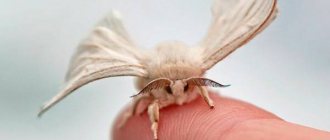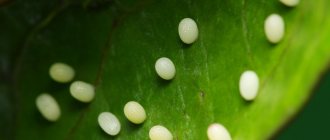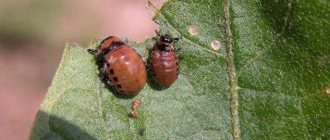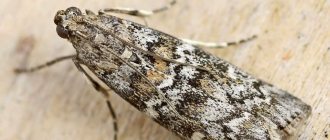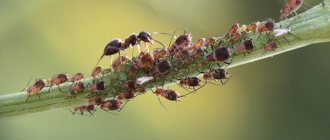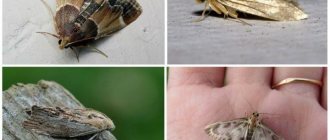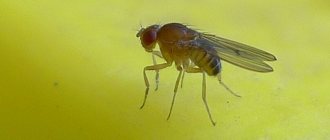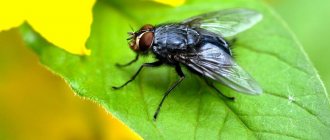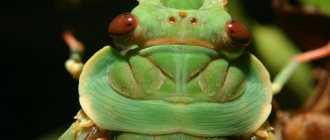- History of domestication
- Silkworm eggs and their incubation
- Caterpillars, molting
- Living in a cocoon
- Butterfly laying eggs
- Breeding
Various silk products have long become a common household item in human life. And the price of wonderful outfits was the prosaic and unsightly appearance of those creatures that create the finest threads of silk - silkworms. Looking at the photo of this adult creature, you can see a pale beige butterfly that cannot even fly. To compensate for this disadvantage, the silkworm has many beneficial properties, using which a person derives many benefits from them for his life.
History of domestication
The Himalayas are considered the homeland of these insects.
It is not known for certain when the properties of silkworms were studied by humans and used in their own farming. Some photos taken during archaeological excavations indicate that they tried to breed silkworms five thousand years ago. True, no one knows how successful it is. The first historical mention of these textile workers dates back to the seventh century BC. These manuscripts describe some of the details of silk production. Several centuries later, the silkworm becomes popular in Asia, where in China it becomes a kind of national treasure and strict checks are carried out to ensure that the caterpillars are exported outside the Middle Kingdom.
And yet, some cunning travelers managed to carry the cocoons in their canes, thereby destroying the Chinese monopoly on silk. Demand, of course, did not fall as a result, but Chinese traders simply had fewer tools for manipulation.
Description, appearance and features
The silkworm is a species of butterfly belonging to the True silkworm family. This is one of the few insect species domesticated by humans. Butterfly breeding began about 5,000 years ago in China. Such a long existence under the protection and care of humans has led to the fact that silkworm butterflies have forgotten how to fly, and caterpillars cannot obtain food for themselves without the help of others.
Uzbekistan: Silkworm harvest
The butterfly looks rather unsightly: in appearance it bears little resemblance to a huge moth. The body is scanty, powerful, covered with a thick layer of small villi. Comb-shaped antennae stand out noticeably on the small head. The color varies from grayish-white to greyish, the wingspan is 40 – 60 mm. At rest, the hind wings of the insect are tucked under the front wings so that they become virtually invisible.
Silkworm eggs and their incubation
Today, the silkworm is a completely domesticated creature; its population in the wild has not been observed anywhere. Since silk mining has always been a very profitable business, today it is put into mass production.
The silkworm eggs from which the caterpillars hatch are placed in an incubator for eight to ten days. A set of silkworm eggs, which in scientific circles are called grenades, must be kept at sufficient humidity and temperature within twenty-three to twenty-five degrees Celsius for the entire incubation period.
Types of silkworms
The silkworm family has about 200 species. The most studied of them is the silkworm , which is completely understandable, taking into account how long the insect lives under human care. Other species live in the wild, and many of them are quite dangerous pests of fruit crops and wild plants.
Ringed
The ringed cocoon moth is a small yellowish-brown moth with a wingspan of up to 40 mm. Juvenile caterpillars are actually dark, adults are bluish-gray, growing up to 55 mm. The insect got its name due to the fact that the female lays eggs in the form of a ring around a plant branch.
Ringed silkworm caterpillars cause great damage to fruit trees (pears, apples, plums). If there is not enough food, the larvae move to oak, poplar, birch, and also bushes.
Caterpillars, molting
After the incubation period, small caterpillars are born, up to three millimeters in size. Such larvae are placed in special trays prepared specifically for this type of larvae, and kept in a well-ventilated, warm and moderately bright room.
And the silkworm breeders begin to carefully care for their pets. It is not for nothing that silkworms are called mulberry, since they feed on the leaves of the mulberry tree, which, undoubtedly, is also called mulberry in their honor. Young larvae have a very good appetite, so the amount of food needs to be almost doubled every day. So they continuously sharpen the leaves for five days.
And then they stop. You shouldn’t be afraid of this, it’s important to know that the time has come for the first molt. Old skin is stretched very tightly. One sharp jerk - and it bursts along the entire length of the body, and under it there is a new one, with some reserve of elasticity for even greater stretching.
During the entire period that the silkworm spends as a larva, which is just over a month, it molts four times. During this period, the caterpillar, painted light yellow, grows up to eight centimeters in length, and the thickness is slightly more than one centimeter.
By this time, the silkworm has a fully formed silk gland, the most valuable part for silkworm breeders, which reaches a size equal to two-fifths of the length of the larva. Now your silkworm will lose its appetite every day and stop feeding on its favorite mulberry leaves. And it’s not surprising, because the silk gland is filled with liquid, which is now released even when moving. It's time to climb into the cocoon.
How is silk obtained?
The main goal in the production of silk is to obtain the silk thread that the caterpillar produces to create a cocoon. 8–10 days after pupation, the cocoons are heated with hot air (about 90⁰C). The doll dies inside. Cocoons are sorted by color and size, then washed in hot and cool water to dissolve the adhesive holding the threads together.
Then the process of unwinding the cocoon begins. Since the threads are very thin, they are connected in 3 to 10 pieces. The resulting fiber is wound into yarn, and then the raw material is sent to weaving mills, where silk is created from it.
By the way, the dead pupae remaining after unwinding the cocoons are considered a very valuable nutritious dish.
Nun
A nocturnal butterfly from the Volnyanka family. Wingspan 35 – 55 mm. The color is gray with a pattern of dark zigzags. The caterpillars grow up to 60 mm; their grayish body with a black head is covered with villi. Insects cause significant damage to forestry by feeding on needles and young shoots of coniferous trees, leaves of oak, birch, beech, and apple trees.
Unpaired
This species received its name due to significant differences in the appearance and size of males and females. Females are large yellow butterflies with a wingspan of up to 90 mm. Males are brownish-yellow, with a wingspan not exceeding 40 mm. Gypsy moth caterpillars infect about 300 species of different plants, including fruit-bearing crops and valuable wood species. Therefore, the insect is classified as a more dangerous pest.
Living in a cocoon
When an adult caterpillar finds a suitable support, mainly a twig, it climbs onto it and makes the basis of a frame for its future location. Having weaved such a strong base, it crawls into its central part. Now begins the most difficult and time-consuming part of the work—making a full-fledged cocoon. The caterpillar turns its head at a fast speed, thereby entangling itself with thin silk threads and thus forming a cocoon within four days. The cocoon itself, oval or round in shape, reaches sizes of up to six centimeters. Having finished its work, the exhausted caterpillar falls asleep and awaits its reincarnation into a chrysalis.
An interesting feature: some silkworms do not weave cocoons, but form something like a flooring, into which they then crawl. Others form cocoons of several individuals, which becomes the subject of unusual photos of these unusual silkworms. But this is an exception to the rule, and not some peculiarity of silkworms.
Gypsy moth
Unpaired
Butterflies of different sexes differ from each other. Females are large, reaching 9 cm when the wings spread, light red or white. Males have a wingspan of up to 4 cm and are brownish-yellow. Flight occurs in the second half of summer, they fly low above the ground, after mating they lay eggs in bark cracks on trunks and trunks, stumps, and fences. Therefore, trapping belts worn on the trunks of fruit trees are effective against them.
The caterpillar is hairy, 6-7 cm long with wart spots. The first five pairs of warts are blue, less noticeable, the back six pairs are distinct red. Clutches of eggs can be recognized by their shaggy, reddish-brown covering. Eggs have high vitality.
04.06.2018
Butterfly laying eggs
After three weeks, the silkworm pupa grows into a full-fledged butterfly, although it cannot fly. The butterfly is selected from its own woven cocoon by soaking the edges of its home with saliva, which is alkali in its chemical composition.
Because of this special saliva, the butterfly's mouth also softens and it is unable to feed. Perhaps this is the main reason for such a short subsequent life span, which lasts about two weeks.
During this time, you need to meet individuals of the opposite sex in order to fertilize the eggs. After just a few hours, silkworm eggs can be laid, which lasts five days.
Eggs in the amount of 300-800 pieces are laid in the grena, which sometimes has bizarre shapes, some of which are depicted in famous photographs. This depends on the timing of the caterpillar hatching, which can be carried out either this year or next.
Silkworm butterfly larvae
The larvae or eggs of this butterfly are scientifically called grena. They have a laterally flattened oval shape, with an elastic transparent film . The dimensions of one egg are so small that per gram of weight their number can reach two thousand.
Immediately after the butterfly lays its eggs, they have a light milky or yellowish color. As time passes, changes occur, leading to the appearance of a pink tint in the larvae, and then to a complete change in color to purple. If the color of the eggs does not change over time, it means the larvae have died.
Silkworm eggs have a fairly long maturation period. He lays them in the summer months: July and August, and then they hibernate until spring. The processes occurring in them at this time slow down significantly in order to survive the effects of low winter temperatures.
If the grena overwinters at temperatures not lower than +15 degrees, then there is a risk of poor development in future caterpillars, so in winter it is necessary optimal temperature conditions for the grena Caterpillars appear before leaves have time to grow on the trees, so grena is stored in refrigeration units at temperatures from 0 to -2 degrees throughout this period.
Breeding
The reason for breeding the silkworm is not to preserve its population, but to obtain raw silk for commercial use.
Therefore, many entrepreneurs are starting to engage in this profitable business. Since there are a sufficient number of silkworm breeders in our regions, you can ask them about the peculiarities of raising silkworms, and at the same time buy eggs. You just need to contact reliable suppliers of these products. Even small households can bring good profits to their owners.
Today in glossy magazines you can see photos of models dressed in silk clothes. Looking at this, you wonder how amazing the gifts of nature can be if you put enough effort and patience into their extraction, which in the end bears multiple fruits.
Lifestyle and habitat
The wings of the silkworm butterfly, which are quite large in relation to the body, indicate that initially the insects knew how to fly well and could thus move over considerable distances. However, the thousand-year development of sericulture has led to the fact that domesticated butterflies have forgotten how to fly. This is primarily due to the fact that the vast majority of insects do not survive to the adult stage.
Adult silkworms have an underdeveloped oral apparatus, so they do not eat, existing due to the supply of nutrients made at the larval stage. But the caterpillars, on the contrary, are very voracious and destroy a huge number of mulberry leaves. By the way, the silkworm lives only where its food plant, the mulberry, grows.
